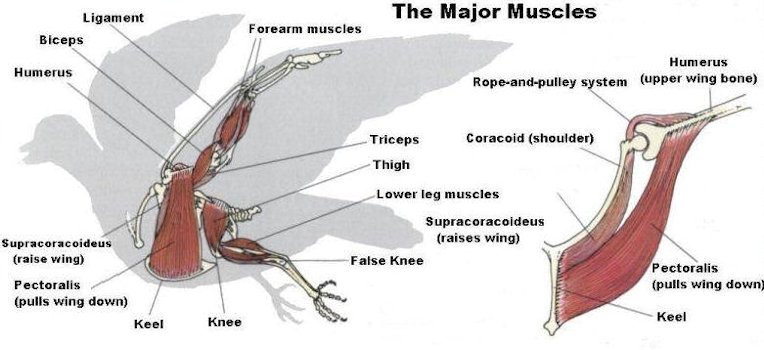So recently, I was reading a book (good book by the way) called Kyris by A.G. Wilde. I really enjoyed it overall, but the alien hunk in the book had wings (very cool wings) and as the author was describing him, I just got taking out of the moment for a bit because I know WAY too much about physiology (and I’m a bit pedantic).
I’m no expert, but I did take a class in Comparative Physiology in college which was both fascinating and very informative. I learned a lot about how various vertebrate species evolved and how the different appendages are similar between species that seemingly have nothing in common (like dolphins and humans). It’s how I know that werewolves would not have legs that “bend backwards” (see my post on the subject).
What Went Wrong?
So what was so wrong about her description? One main thing:
The alien was described as lean.
Look at every bird you can think of. All of them. To a one, they all have big barrel chests, most of them have chests that encompass most of their body. There are very big reasons for this that I’ll go into.
Musculature
It takes a lot of muscle to sustain flight, specifically across the chest and back. Birds have an enormous amount of muscle around their ribcage. This accounts for 25-35% of their total body weight. Look at the image below. Those pecs are HUGE! Body builders WISH they could get pecs like that!

Breathing
Birds operate under a very different respiratory system to ours. It functions on a complicated system of air sacs that mean that there is constant air exchange whether the bird is breathing in or out. Flow of air through their lungs is unidirectional (one way) in contrast to mammalian bidirectional flow (two way). Birds have sacs specifically dedicated to carbon dioxide-rich air and oxygen-rich air.
This is essential for flight as it requires enormous amounts of oxygen and energy, which would not be possible with lungs like ours.
They also have much more surface area for gas exchange, which allows them to recharge their blood with oxygen at a faster rate than us as well.
All in all, this requires a much larger chest capacity to fit these extra air sacs and lungs, resulting in a more barrel-chested physique.
Conclusion
All in all, you wouldn’t expect someone with wings to have a slim physique. While there are other adaptations for flight (e.g. hollow bones to reduce weight), a big barrel chest is one of the most obvious visually and very straight-forward to portray in fiction.
Still enjoyed the book, though…
Discover more from Danielle Forrest | Sci-Fi Romance Author
Subscribe to get the latest posts sent to your email.


